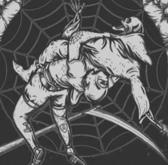
Review on AUREUO Watercolor Painting Canvas Pad - 12x16 Inch, 10 Sheets, 2 Pack - 8 Oz. Triple Primed White Blank Cotton Pads for Watercolor Paints by Nate Jenkins

Interesting With Limitations
My wife is the artist in the family and here is her take on this product:I've never heard of anything like this before, so it was interesting to try out.Positives:1. It's easy to get a smooth, clear wash. The canvas seems to absorb paint/water a bit more slowly but more steadily than watercolor paper, so a wash that's a bit patchy will even out over time.2. It doesn't warp under normal circumstances that I found. (See below for less normal circumstances.)3. The texture is interesting.Negatives:1. If you like to tape off your edges to get a clean, white border around your picture, that won't work with the canvas. Because it absorbs paint/water more than watercolor paper does, it absorbs the paint right underneath the tape, leaving a paler but clear and ragged edge of color around the picture. The lines where the tape edges were are clear, but there's a ragged border around *that* and it's ugly. Note that I used painter's tape, not washi tape.2. Because of the different/stronger absorption, it can be difficult to get clean or fine lines. This one was a bit strange -- sometimes lines or edges stayed crisp and sometimes they fuzzed out. The only thing I can think of is that it might have depended on how much water I'd put into the canvas already; it might've affected the sizing strangely past a certain point. I did three paintings on the canvas and didn't feel like doing more to experiment. Just be warned.3. Do NOT use the back of the canvas. If I'm experimenting or practicing, I like to do one picture, then later (well after it's dried) turn the paper (or in this case, canvas) over and use the back, because watercolor paper (or canvas) is expensive. I've never had a problem doing this with paper, but the canvas didn't like it at all. I did a messing-around piece first, lots of wet-on-wet, different strokes, different amounts of water, just seeing how the canvas reacted. It wasn't bad, although I had the problem with some fuzzing edges I mentioned above. The next day, well after the picture was dry, I turned it over and painted a large tree on the back, using a drybrush technique. The canvas absorbed the paint so strongly that all the drybrush texture vanished, giving me a smooth, green blob, not what I wanted at all. And after the paint dried, I came back to find that the canvas had curled -- not warped, but *ruffled* -- around the top edge of the tree, strongly enough to have pulled the painter's tape clean off my backing board around the top 2/3 or so of the canvas. This ruffle was permanent.I did a third painting, on a second piece of canvas. I used wet-on-wet to do a sky and ground background, let them dry, then used drybrushing to paint a tree. The canvas was fine, with no ruffling or even warping. I can only assume the problem was with having used both sides before; again, it's probably an issue with the sizing.On the whole, this is an interesting surface to use, and I'll keep it around to use occasionally. I think, on the whole, I prefer good watercolor paper, but this is a cool alternative, particularly if I'm doing a picture where I'm not looking to get a lot of fine lines or crisp detail. Some weird limitations, but fun to mess around on.
- Convenient and easy to store, meaning you can take them with you anywhere
- May not hold up to heavy blending
New products
Comments (0)
Top products in 🔳 Boards & Canvas
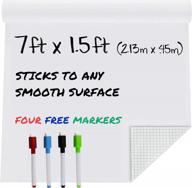
7Ft Whiteboard Wallpaper - Stick On Peel Adhesive For Classroom, Office & Home | MMFB Arts & Crafts

32 Review
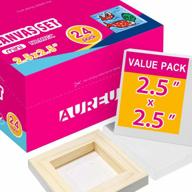
AUREUO Mini Stretched Canvas - 2.5 X 2.5 Inch/24 Pack - 2/5 Inch Profile Little Square Canvas - Holiday Gift Set For Kids, Ideal For Painting & Craft

32 Review
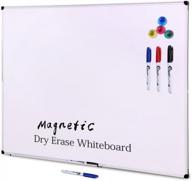
Efficient Organization At Your Fingertips With XBoard Magnetic Whiteboard Set: 48 X 36 Dry Erase Board With Accessories!

39 Review
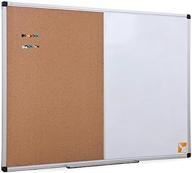
📋 48 x 36 Magnetic Dry Erase Board & Cork Board Combo - XBoard, Whiteboard with Aluminum Frame

22 Review
Another interesting products
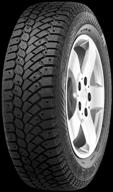
Gislaved Nord Frost 200 205/55 R16 94T winter

159 Review
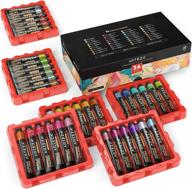
Create Stunning Metallic Masterpieces With ARTEZA'S Set Of 36 Acrylic Paints - Non Toxic, Non Fading, Rich Pigments Perfect For Hobby And Professional Artists!

45 Review
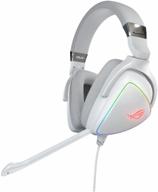
Computer headset ASUS ROG Delta Type-C, white

46 Review
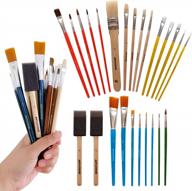
Discover The Ultimate Brush Set: 25 Artlicious Brushes For All Your Painting Needs

36 Review

